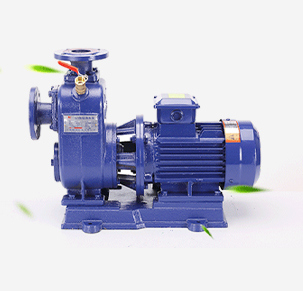Uighur
- Afrikaans
- Albanian
- Amharic
- Arabic
- Armenian
- Azerbaijani
- Basque
- Belarusian
- Bengali
- Bosnian
- Bulgarian
- Catalan
- Cebuano
- Corsican
- Croatian
- Czech
- Danish
- Dutch
- English
- Esperanto
- Estonian
- Finnish
- French
- Frisian
- Galician
- Georgian
- German
- Greek
- Gujarati
- Haitian Creole
- hausa
- hawaiian
- Hebrew
- Hindi
- Miao
- Hungarian
- Icelandic
- igbo
- Indonesian
- irish
- Italian
- Japanese
- Javanese
- Kannada
- kazakh
- Khmer
- Rwandese
- Korean
- Kurdish
- Kyrgyz
- Lao
- Latin
- Latvian
- Lithuanian
- Luxembourgish
- Macedonian
- Malgashi
- Malay
- Malayalam
- Maltese
- Maori
- Marathi
- Mongolian
- Myanmar
- Nepali
- Norwegian
- Norwegian
- Occitan
- Pashto
- Persian
- Polish
- Portuguese
- Punjabi
- Romanian
- Russian
- Samoan
- Scottish Gaelic
- Serbian
- Sesotho
- Shona
- Sindhi
- Sinhala
- Slovak
- Slovenian
- Somali
- Spanish
- Sundanese
- Swahili
- Swedish
- Tagalog
- Tajik
- Tamil
- Tatar
- Telugu
- Thai
- Turkish
- Turkmen
- Ukrainian
- Urdu
- Uighur
- Uzbek
- Vietnamese
- Welsh
- Bantu
- Yiddish
- Yoruba
- Zulu
Telephone: +86 13120555503
Email: frank@cypump.com
ئۆكتەبىر . 14, 2024 13:32 Back to list
ejector pump parts
Understanding Ejector Pump Parts A Comprehensive Overview
Ejector pumps play a crucial role in various industries, particularly in wastewater management and drainage systems. These specialized pumps are designed to remove liquids and solids from areas that cannot be easily drained by gravity alone. Understanding the components that make up an ejector pump is essential for anyone involved in maintenance, installation, or operation. This article will explore the key parts of an ejector pump, their functions, and their importance in ensuring efficient pumping operations.
1. Pump Housing
The pump housing, often made from strong materials such as cast iron or stainless steel, encases all the internal components of the ejector pump. Its primary function is to provide structural integrity and protect the internal parts from external elements. The housing is designed to withstand high pressure and, in many cases, corrosive environments due to the chemicals contained in wastewater.
2. Impeller
The impeller is a critical component of an ejector pump, responsible for creating the flow of liquid. It achieves this by converting rotational energy from the motor into kinetic energy in the fluid. Typically made from bronze or thermoplastic, the impeller's design can vary based on the pump's intended application, with options ranging from single to multiple vanes to enhance efficiency and flow characteristics.
3. Diffuser
Next in line is the diffuser, which is responsible for converting the high-velocity flow exiting the impeller into a high-pressure flow. This component helps to optimize the performance of the pump, ensuring that the liquid is directed effectively into the discharge pipe. The design and configuration of the diffuser are crucial for minimizing turbulence and ensuring smooth fluid flow.
4. Motor
ejector pump parts

The motor is the heart of the ejector pump, driving the impeller and thereby facilitating the movement of liquid. There are various types of motors used in ejector pumps, including submersible and above-ground models. The choice of motor often depends on the specific application and the environment in which the pump operates. Proper sizing and specification of the motor are vital for achieving the desired pump performance.
5. Check Valve
A check valve is an essential component in preventing backflow within the system. Located on the discharge side of the ejector pump, this valve ensures that the liquid pumps out efficiently without allowing it to return to the pump housing. The check valve is crucial for maintaining the operational integrity of the system and preventing potential damage due to reverse flow.
6. Basin or Sump
Ejector pumps are often used in conjunction with a basin or sump, which serves as a collection point for the fluids being pumped. The basin collects wastewater or stormwater until it reaches a certain level, at which point the ejector pump activates to remove the liquid. Proper sizing and placement of the basin are essential for the effective operation of the ejector pump and the entire drainage system.
7. Control Panel
The control panel oversees the operation of the ejector pump, providing a user interface to monitor performance, set operational parameters, and receive alerts for maintenance or failures. Advanced control panels may include features such as float switches, timers, and alarm systems, ensuring the pump operates efficiently and responds promptly to changes in water levels.
Conclusion
In conclusion, the functionality of ejector pumps relies heavily on the synergy of various components, including the pump housing, impeller, diffuser, motor, check valve, basin, and control panel. Understanding these parts not only aids in the effective maintenance and operation of the pump but also ensures longevity and reliability in wastewater management applications. As industries continue to evolve, innovations in ejector pump design and technology will undoubtedly enhance their efficiency and effectiveness, making them indispensable tools for managing liquid waste.
-
High Efficiency Horizontal Split Case Pump for Industrial Use
NewsJul.25,2025
-
Flue Gas Desulfurization Pump for Efficient Chemical Processing
NewsJul.24,2025
-
High-Efficiency Axial Flow Pump for Water Transfer & Irrigation
NewsJul.23,2025
-
High-Efficiency Horizontal Split Case Pump for Industrial Use
NewsJul.22,2025
-
Reliable Septic Tank Pumps | Durable & Clog-Resistant
NewsJul.22,2025
-
Here is the optimized TDK set for "axial flow pump": ``` Axial Flow Pump: High-Efficiency & Reliable Water Transfer Solutions
NewsJul.21,2025










